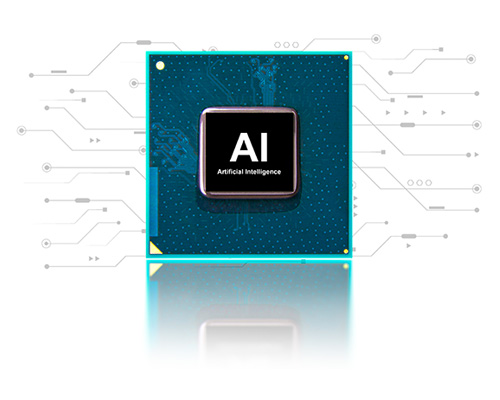From the perspective of a Chief Marketing Officer (CMO) or a marketing agency, the evolving audience targeting landscape (following the deprecation of third-party cookies) necessitates a strategic reevaluation of methods. AI and machine learning (ML) are shifting to become more prevalent in this context, and marketers will need to be prepared.
While AI and ML may seem daunting at first, they offer immense potential to enhance marketing efforts in the absence of third-party cookies. By automating tasks, analyzing complex data sets, and providing actionable insights, these technologies empower marketers to make smarter decisions, optimize campaigns, and deliver more personalized experiences to their audience.
In this blog, we explore how AI and machine learning will become more prevalent, and how to consider these components as you build your digital strategies.
Advanced Audience Profiling
AI and ML algorithms can analyze vast datasets to generate detailed audience profiles based on first-party data and contextual signals. By identifying patterns in user behavior, preferences, and interactions, these technologies enable marketers to gain deeper insights into their target audience without relying on individual tracking through third-party cookies. You may think of this like persona building or segmenting your audience, or by some other name. But the more personalized you can make the first party data you have, the better your conversions will be from your own audience, and those you build from that audience.
Predictive Modeling for Audience Targeting
With the demise of third-party cookies, predictive modeling becomes crucial for identifying and reaching potential customers. AI-driven predictive analytics algorithms can forecast user behavior and preferences based on historical data, allowing marketers to target audiences likely to convert or engage with their campaigns effectively. Rely on your agency partners to describe trends they are seeing or are being reported to them, and discuss the implications these may have on the long term success of your campaign.
Real-Time Optimization
AI-powered advertising platforms can dynamically adjust ad targeting and messaging in real-time based on user interactions and feedback. By continuously optimizing campaigns for maximum effectiveness, marketers can achieve better results even in the absence of granular tracking data provided by third-party cookies. You may be accustomed to “learning phases” of your campaigns as they are served in Meta, Search, YouTube or elsewhere. These learnings will improve as your campaign runs. Important: changes to a running campaign (or portions of the campaign) may mean that your learning starts over. Optimize manually with care.
Content Personalization
Machine learning algorithms can analyze user preferences and content consumption patterns to deliver personalized experiences across various touchpoints. By tailoring content and messaging to individual interests and needs, marketers can enhance engagement and drive conversions without relying on cookie-based tracking for targeting. This is certainly related to the Audience Targeting section, above.
Cross-Channel Attribution Modeling
AI and ML enable more sophisticated attribution modeling techniques that consider multiple touchpoints and channels in the customer journey. By accurately attributing conversions and actions to various marketing interactions, marketers can optimize budget allocation and campaign strategies for maximum impact, despite the limitations posed by the deprecation of third-party cookies.
Marketers must consider the “balanced breakfast” approach to omnichannel marketing. Just as search and display are natural partners by covering different parts of the funnel, so will your overall campaign be affected by the channels selected within it.
Strategic Partnerships with AI Providers
As AI and ML technologies become integral to marketing strategies, CMOs and marketing agencies may forge strategic partnerships with AI providers and technology vendors specializing in data analytics, predictive modeling, and ad optimization. These partnerships can provide access to cutting-edge AI capabilities and expertise, empowering marketers to stay ahead of the curve in a cookie-less digital landscape. But remember, all AI platforms still need a human manager. Don’t trust everything you learn from an artificially produced report, without verifying.
The shift away from third-party cookies presents both challenges and opportunities for traditional marketers. It’s natural to feel nervous about adopting new technologies like artificial intelligence (AI) and machine learning (ML), especially when they seem to upend established practices. However, embracing these innovations is beneficial for staying competitive in the evolving landscape of digital marketing.
Rather than viewing AI and ML as threats to traditional marketing methods, marketers should see them as valuable allies in navigating the complexities of the digital age. Embracing a growth mindset and investing in education and training can help alleviate fears and equip marketers with the skills and knowledge needed to leverage these technologies effectively.
Moreover, understanding AI and ML doesn’t mean replacing human creativity and intuition but augmenting them with powerful analytical tools. By combining human ingenuity with machine intelligence, marketers can unlock new levels of innovation, efficiency, and effectiveness in reaching and engaging their target audience.
In essence, while the road ahead may seem uncertain, the key lies in embracing change, fostering a culture of curiosity and learning, and seizing the opportunities presented by AI and ML. By doing so, traditional marketers can not only adapt to the post-cookie era but also thrive in it, delivering impactful campaigns and driving meaningful results for their brands.




 Ad Choices
Ad Choices